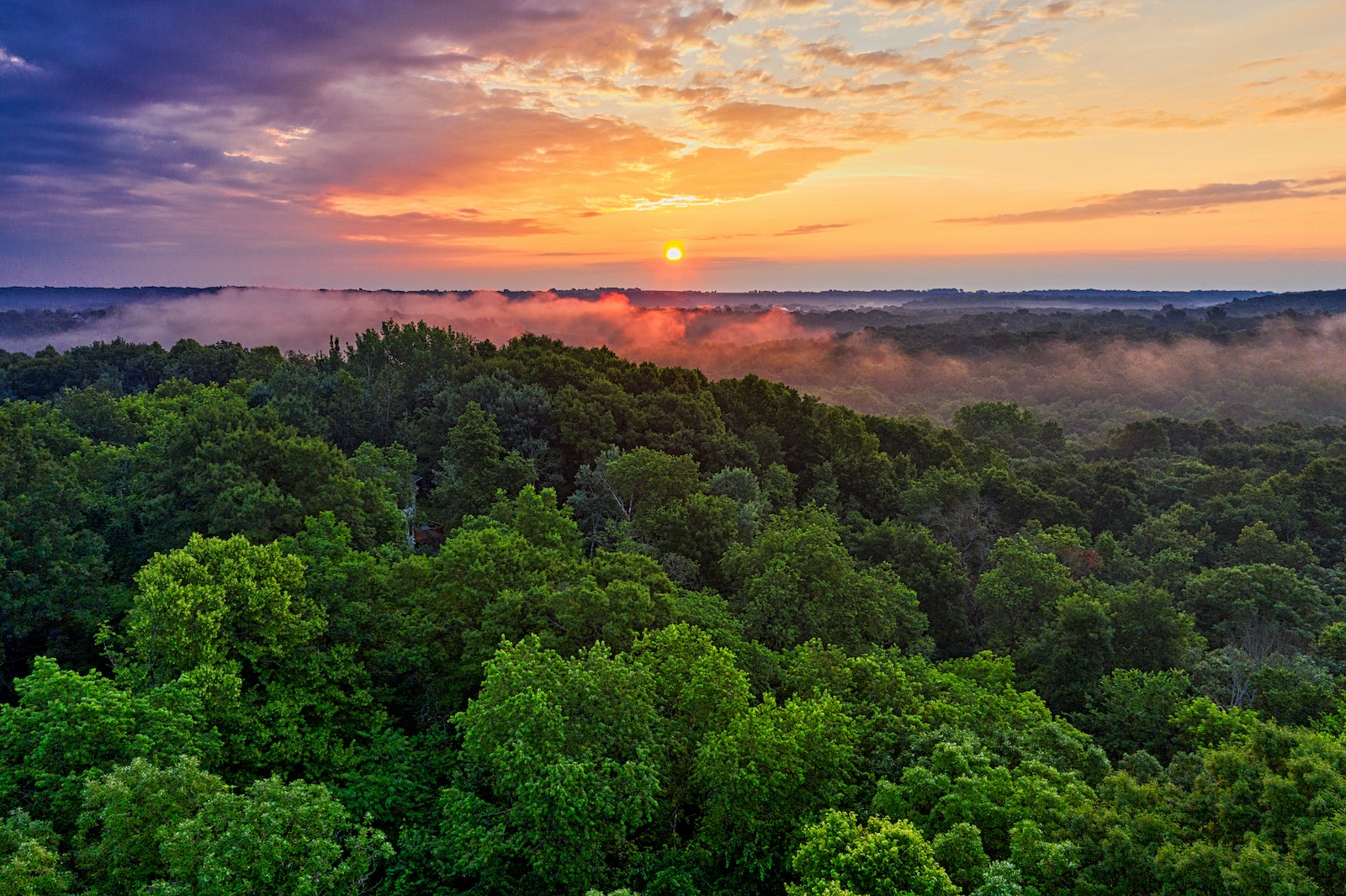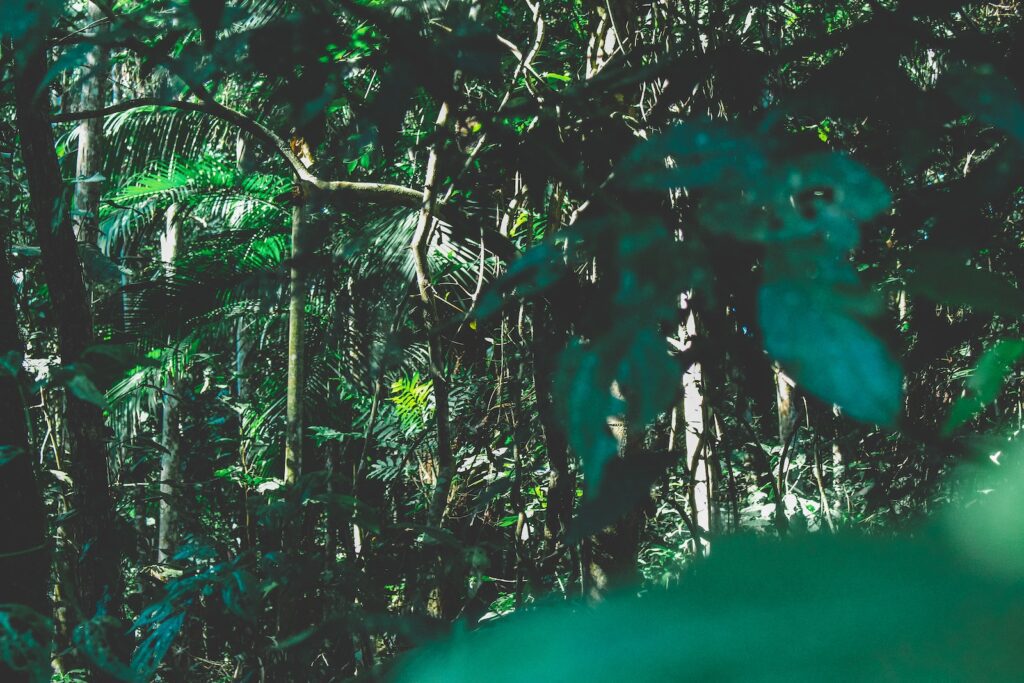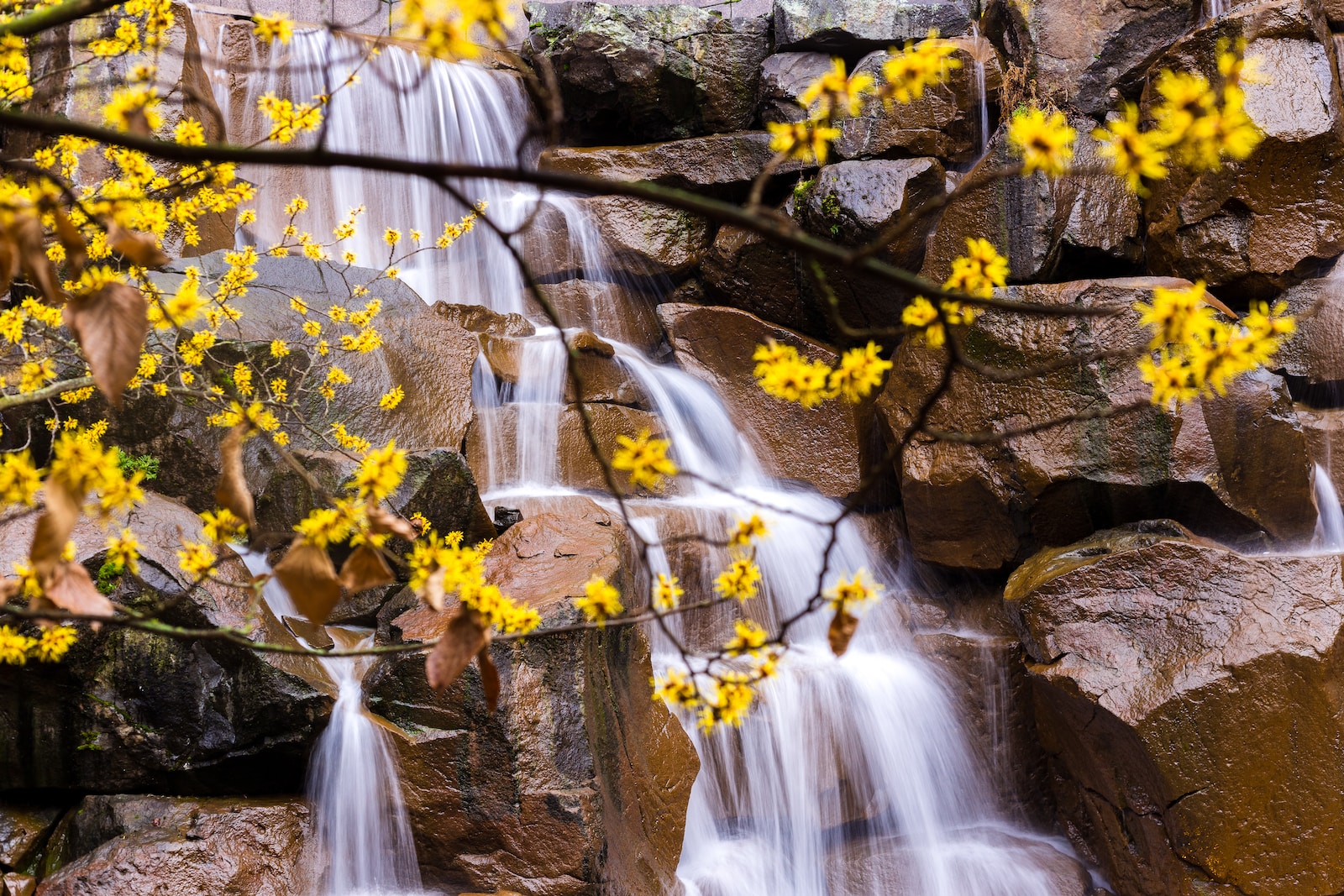The Jungle and the Rainforest: More Than Just Green Canopies
Take a breath. Feel that? That’s a quarter of the world’s oxygen, generated by rainforests.
Now, close your eyes and imagine a mélange of vibrant colors, an orchestra of exotic sounds, and an ever-changing theater of life unfurling before you. That’s what rings a bell when we talk about rainforests or jungles.
The words invoke images of lush vegetation teeming with wildlife, interspersed with breaks of brilliant sunlight filtering through an endless canopy. Yet there’s so much more to these planetary lungs than meets the eye.
Rainforests and jungles are often considered synonymous in casual conversation – both conjure up notions of sprawling green landscapes brimming with unparalleled biodiversity. However, they are not merely different terms for the same thing; each has its unique characteristics and ecosystems that set them apart.
Cracking the Code: Debunking Myths about Rainforests and Jungles
One common misconception is that any dense forest located in tropical countries can be classified either as a jungle or a rainforest – this is far from accurate! Not all forests in tropics are rainforests; some could be mangroves or bamboo forests too.
Another myth is that ‘jungle’ is merely another name for ‘rainforest’. This error stems from misunderstandings about geographical distribution and ecological function.
While it is true that both types exist within the tropical zone and support tremendous biodiversity, their physical structure, living conditions, and even climate varies greatly. But importantly – ever heard how people lost in thick forests express it as “It’s a jungle out there”?
In reality, this phrase should refer to “It’s a rainforest out there” because ‘jungle’ is actually derived from Sanskrit word ‘jangala’ meaning wasteland – quite counter-intuitive isn’t it? Perhaps we do need to get lost (in knowledge) before finding our way!
Rainforests: The Lush Green Giants
Understanding the unique characteristics of a rainforest
When someone mentions ‘rainforest’, what might come to mind is an expansive, dense greenery that is constantly wet. Well, you’re not entirely wrong but there’s more to it than the rainfall that gives it its name. A rainforest is a type of forest distinguished by its location and climate, and these very factors contribute to its unique biodiversity and layered structure.
Location, location, location: Unveiling the global footprints of these verdant titans
Ranging from tropical to temperate climates, rainforests are spread across various regions of our planet. Tropical rainforests are located around the equator – countries in South America (think Amazon), Africa (the Congo Basin), and Southeast Asia harbor these emerald treasures. Meanwhile, temperate rainforests grace the coastal areas in regions like North America’s Pacific Northwest or Southern Chile.
Climate conditions in the rainforest: It’s not all about precipitation
Rainforests live up to their name with abundant rainfall- receiving at least 80 inches annually. But it’s not just H2O that defines them- they also maintain a warm temperature throughout the year, typically between 20°C – 25°C (68°F – 77°F). This consistent climate provides a perfect backdrop for life to flourish in all shapes and sizes.
The layered structure of a rainforest: A vertical journey into nature’s masterpiece
A tour through a typical rainforest would take you through four distinct layers – emergent layer hosting towering trees; canopy layer forming an umbrella-like configuration; understory or shrub layer filled with young trees and shrubs; finally ground layer receiving minimal sunlight yet abounding with life forms like insects or larger mammals.
The Biodiversity Bonanza Taking Place in Rainforests
Flora Frenzy: An Exhibit of Nature’s Prolific Palette
Rainforests boast over two-thirds of Earth’s plant species – talk about being green! From gigantic trees reaching upto 200 feet tall to tiny orchids blooming on their trunks – each level houses diverse plant species creating a symphony of abundance. Even fungi play versatile roles here–decomposer today may turn symbiotic partner tomorrow!
Fauna Fiesta: Your Exclusive Invitation To The Grand Assembly Of Rainforest Animals
The faunal assemblage in a rainforest can be nothing less than mind-boggling! Ever heard about howler monkeys screaming away at daybreak? Or sloths spending most their time upside down?
How about anacondas slithering through water bodies? Each creature playing out distinctive roles ensures this complex ecosystem ticks along harmoniously.
Jungles: Not Just Another Word for Rainforests
The Vagabond Veins of Vegetation: What Sets a Jungle Apart?
A jungle, in stark contrast to the ordered grandeur of a rainforest, is characterized by its seemingly untamed nature. Undoubtedly, the term “jungle” has long been used interchangeably with “rainforest”, however, they are as disparate as dusk and dawn. Jungles are typically areas of land overgrown with dense forest and tangled vegetation, often in tropical climates.
The key distinction lies not just in their geographical or climatic attributes but also in their structural components. Jungles lack the distinct layering observed in rainforests and instead present a chaotic mix of vegetation where competition for sunlight results in an all-enveloping green canopy.
Mapping Out the Green Maze: Where do Jungles Hang Out on Our Planet?
Despite being less widespread than rainforests, jungles still mark considerable territories across our planet. They are usually found bordering tropical rainforests where sunlight pierces through openings in the canopy, creating suitable conditions for dense undergrowth to thrive.
From the vast jungles of Amazonia that extend into several South American countries to the Daintree jungle in Australia, these lush landscapes form critical parts of our planet’s ecosystem. Despite their geographical spread being relatively diminutive compared to rainforests’, their ecological influence is nothing short of substantial.
Hot Under the Green Canopy: How Hot Exactly is a Jungle?
Jungles are typically hot and humid – they do after all reside primarily within tropical regions spanning either side of the equator. Average temperatures throughout the year can reach well above 30 degrees Celsius (86 Fahrenheit), but unlike rainforests which experience regular high rainfall year-round, jungles have marked dry seasons punctuating periods of heavy rains. This translates to a climate regime that while hot and humid like its rainforest cousin is interspersed with periods when drought-resistant species rise to prominence – another facet distinguishing jungles from rainforests.
The Tapestry of Chaos: The Structure of a Jungle
Venture into any jungle and you’ll be met by what appears to be an impenetrable wall of greenery – it’s like stepping into nature’s labyrinth. This enveloping façade forms part and parcel due to having fewer tree layers than a typical rainforest thus allowing more light penetration spurring rampant undergrowth development. Unlike neatly stratified rainforests that boast multiple layers from emerging trees right down to forest floor dwellers; jungles present less differentiation between tree heights resulting in continuous layers often making navigation quite challenging!
A Riotous Rendezvous: The Biodiversity Bash in The Jungle
A Leafy Soiree : An Insight Into Jungle’s Green Scene
Step into any jungle’s heart & you’re stepping into nature’s ultimate green fest! From colossal trees towering above forming makeshift rooftops, vine-laden branches crisscrossing paths below – plant life here thrives amidst chaos!
Palette ranges from umpteen shades green interspersed vibrantly colored flowers adorning everything imaginable! Some plants have adapted intriguing survival mechanisms—from sharp thorns warding off predators intricate symbiotic relationships other organisms ensure survival this cutthroat world.
The Wild Congregation : Who’s Who In The Jungle’s Animal Kingdom?
A journey through any jungle inevitably becomes wildlife spotting adventure extraordinaire! These ecosystems support myriads creatures— from fleeting bird species flitting amidst dense foliage elusive big cats prowling shadowy undergrowth.
Jungle biodiversity unprecedented—each organism playing crucial role maintaining delicate balance within ecosystem. One moment stumble upon nimble monkey swinging overhead next you could encounter iridescent beetle unsurpassed beauty diligently decomposing fallen leaf litter ground—it’s never-ending surprise package!
Rainforests vs Jungles: The Showdown
A Duel of Climates: Eternal Showers against the Sweltering Sun
In one corner of our green-laden ring, we have rainforests, the eternal recipients of nature’s shower. For these luscious expanses, the name says it all.
Rainforests receive a staggering amount of precipitation throughout the year—between 98 and 177 inches, to be precise. This copious rainfall combined with a year-round warm climate creates a consistently moist environment – an ideal habitat for a rich tapestry of life forms.
Meanwhile, in the opposing corner, jungles stand resolute under the sweltering sun. Jungles are typically found around the equator where it’s hot – really hot – with average annual temperatures often exceeding 86 degrees Fahrenheit!
However, unlike their rainforest counterparts, jungles have more varied rainfall patterns that can range from arid seasons to monsoon deluges. This sporadic watering creates an environment that is more susceptible to change and evolution.
Structural Showdown: Layered Elegance versus Tangled Bedlam
Rainforests exhibit an architectural marvel that would make even nature envious—a beautifully layered order. From towering emergent trees peeking above everything else to understory shrubs huddling close to the ground—there’s structure at every level in a rainforest.
These layers provide various microhabitats for different species which contribute to its biodiversity. On the contrary, jungles are akin to Jackson Pollock’s painting on steroids—utter chaos but beautifully so!
There isn’t quite as much vertical layering in jungles; instead, they’re characterized by undergrowth so thick and unrelenting that sunlight struggles to penetrate past this verdant barrier. As you might guess, this creates an entirely different set of living conditions for plant and animal species.
Biodiversity Brawl: Who Houses More?
Comes perhaps one of the most heated debates—biodiversity battle! Rainforests have long been celebrated as biodiversity hotspots with over half of Earth’s plant and animal species calling them home despite covering just about 6% of our planet’s surface. However, don’t underestimate our jungle contender just yet!
While not as extensively studied or documented as rainforests due primarily to their impenetrable thickets (yes—we’re looking at you verdant barrier!), early research suggests that their biodiversity might give stiff competition to rainforests. One thing is certain – both ecosystems play pivotal roles in shielding us from climate change impacts while housing an astounding array of life forms.
Conclusion: An Ode to the Green Lungs of Our Planet
In this whirlwind tour through the verdant fields of our planet’s rainforests and jungles, we have uncurled their similarities and differences, studying them like a botanist would a new species. Both rainforests and jungles serve as crucial habitats for a myriad of creatures, hosting an incredible array of biodiversity. Yet they also each offer unique ecosystems – the ordered layers of a rainforest contrasting with the chaotic tangle that is a jungle; the lavish rainfall in rainforests versus the high heat in jungles.
Yet, amidst these differences and beyond their scientific definitions, perhaps it is essential to remember that both these green giants are irreplaceable treasures. They are not only sanctuaries for countless species but vital entities that regulate our planet’s climate while also producing life-sustaining oxygen.
They provide us with innumerable resources from food and medicine to wood and even shelter. Rather than focusing on what sets them apart, it might be more beneficial for us to appreciate what unites them: their role as custodians of biodiversity and their significance in our world’s ecological balance.
In an era where both these habitats face increasing threats from deforestation and climate change, protecting these environments should be paramount. After all, we are intrinsically bound to these vibrant ecosystems – our survival is intertwined with theirs.
 Skip to main content
Skip to main content



